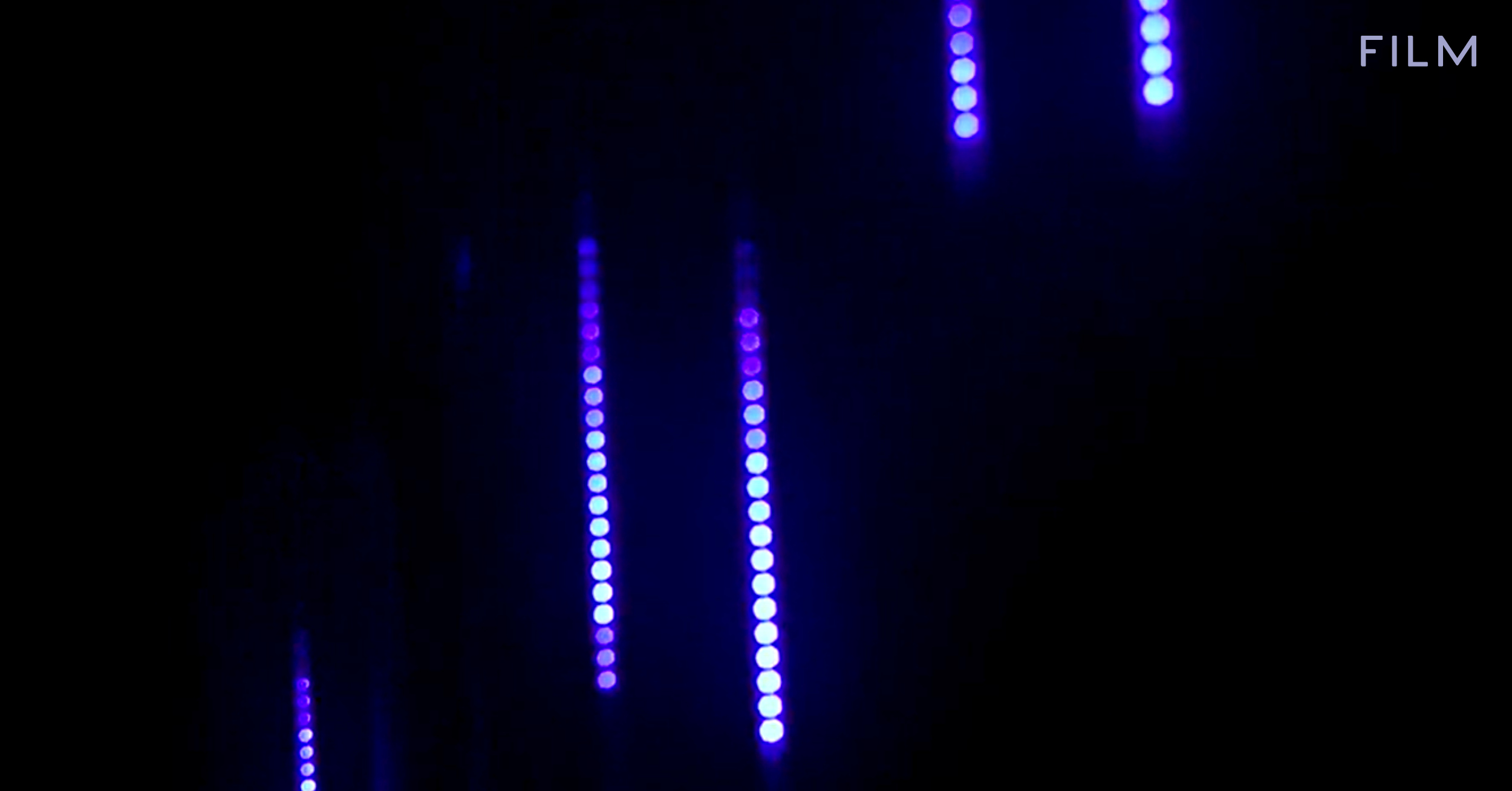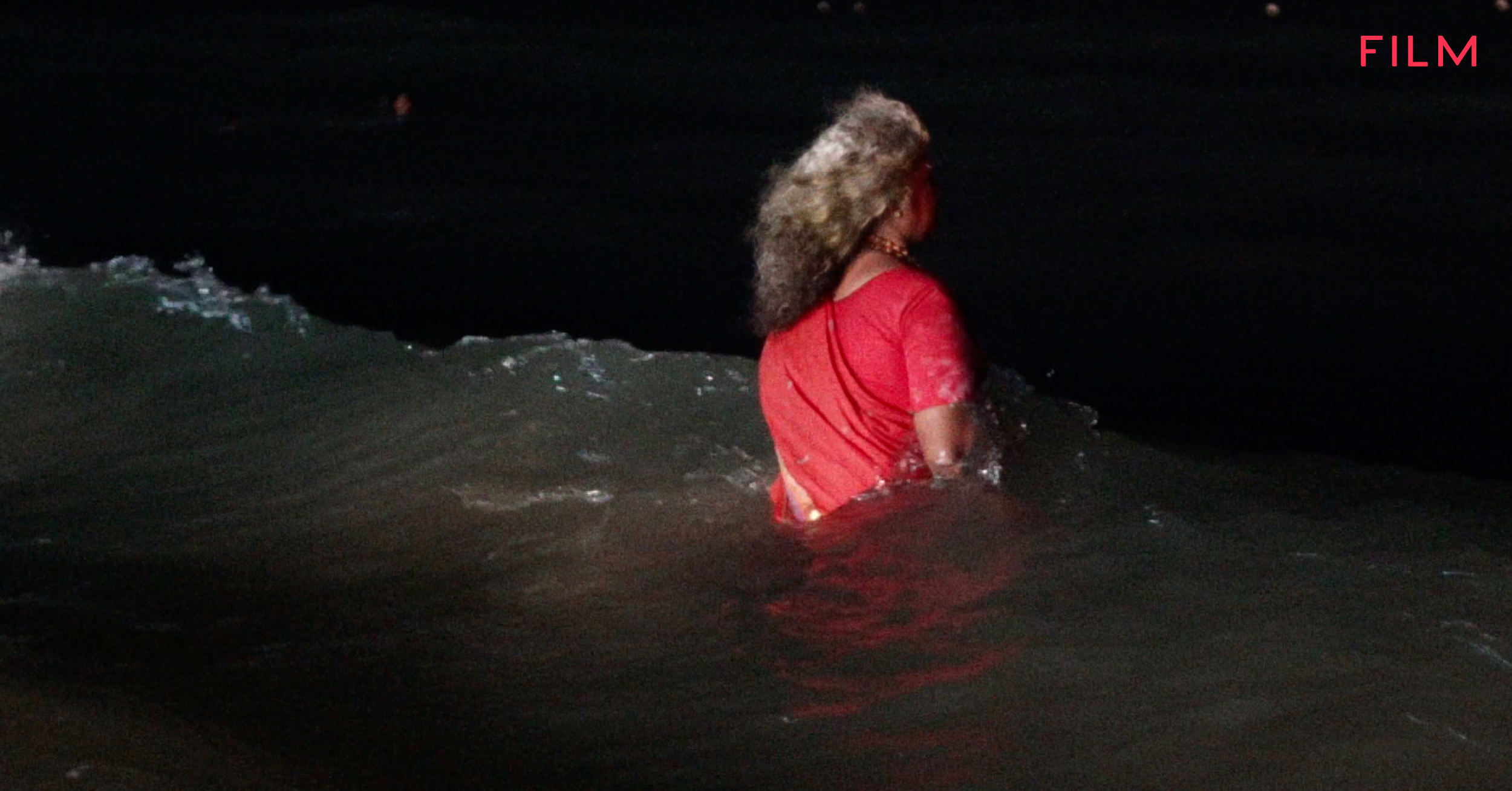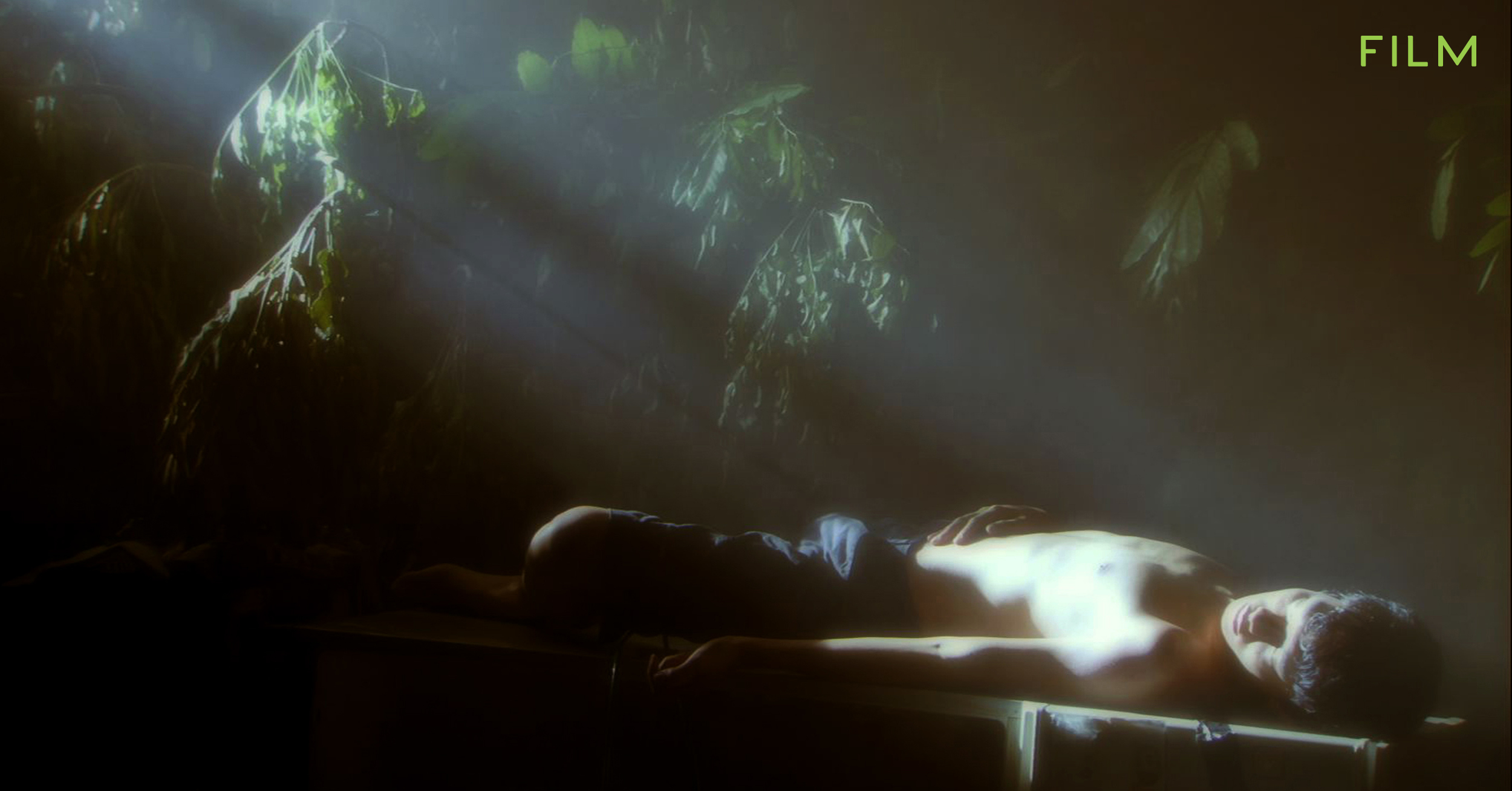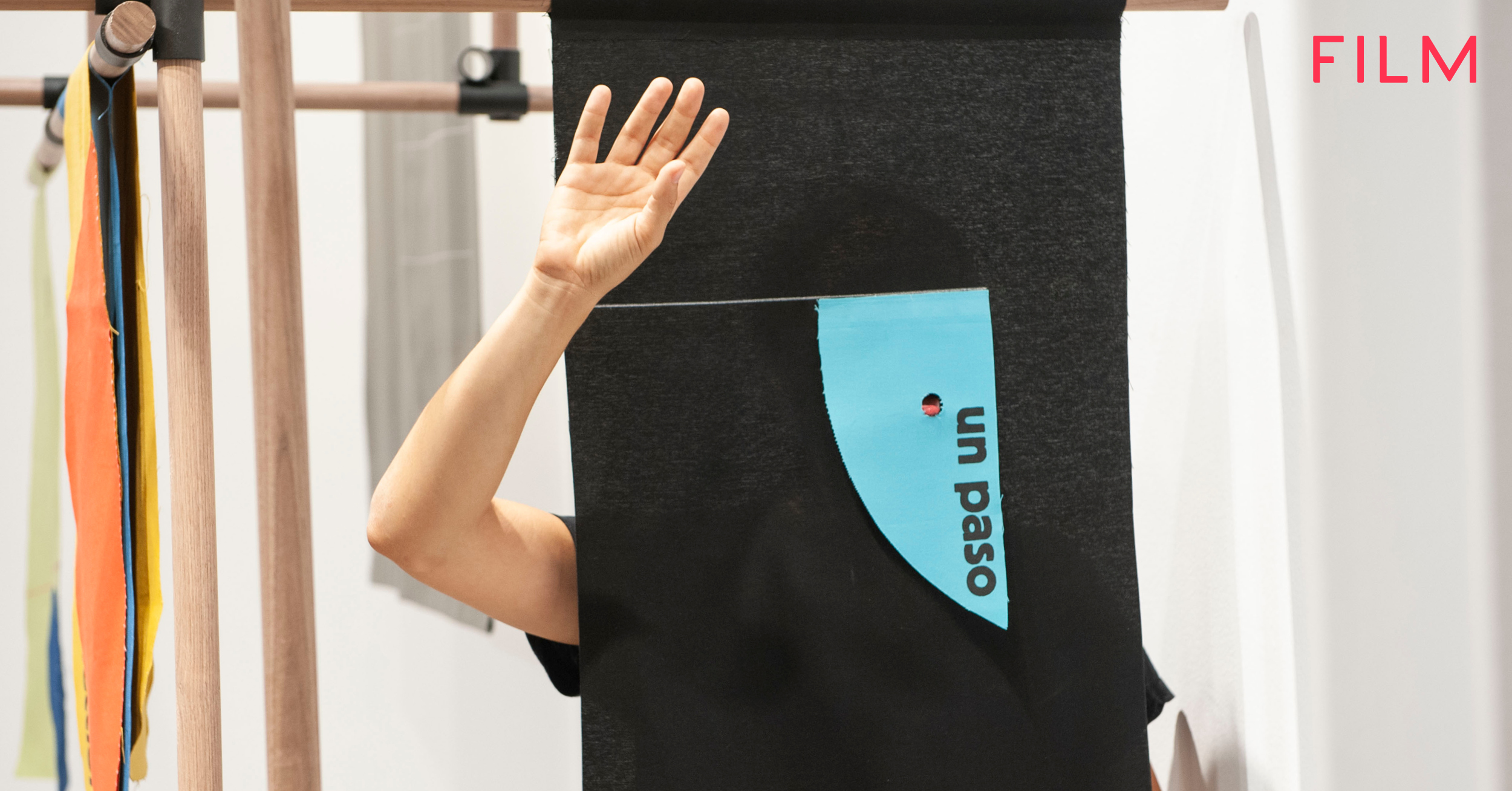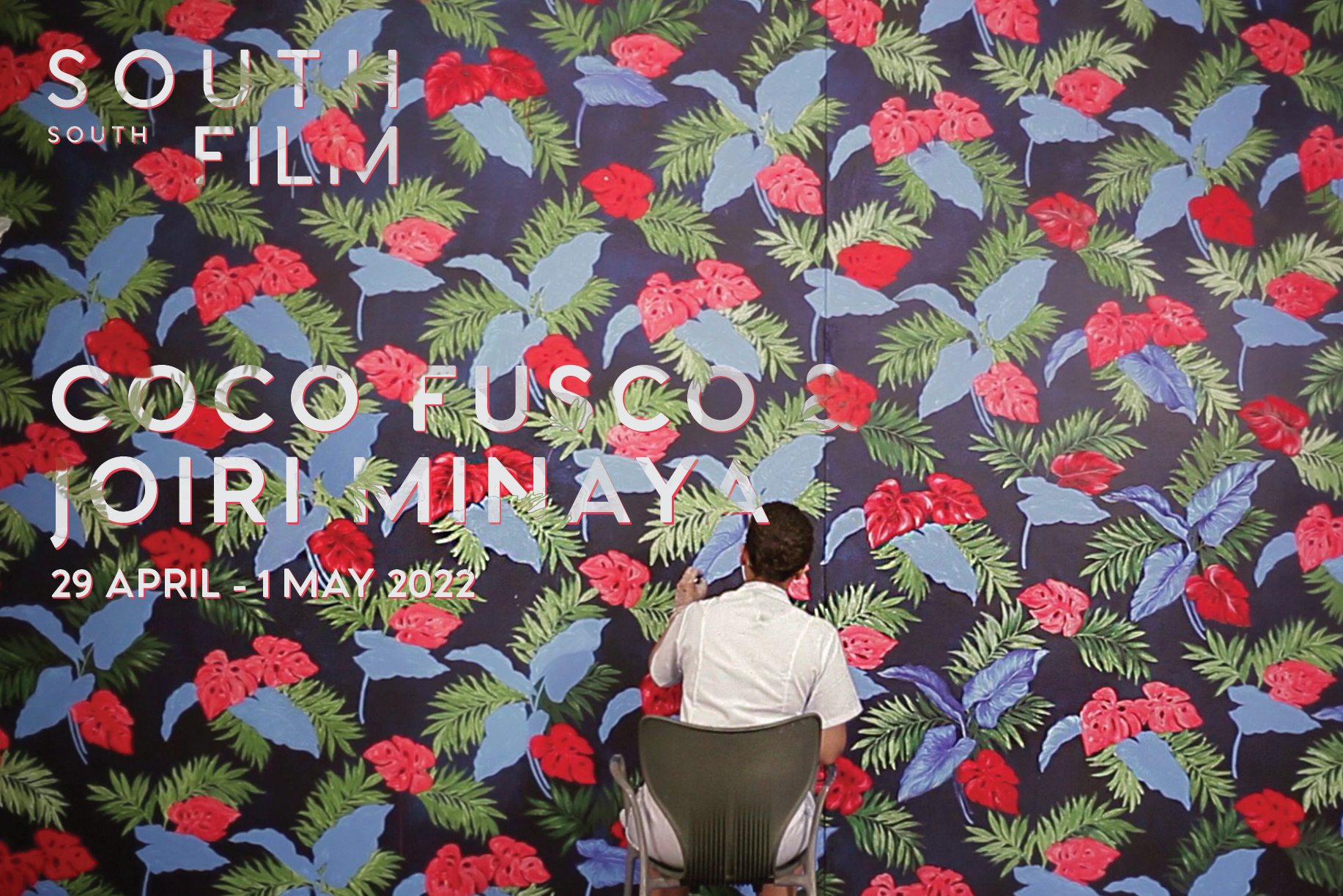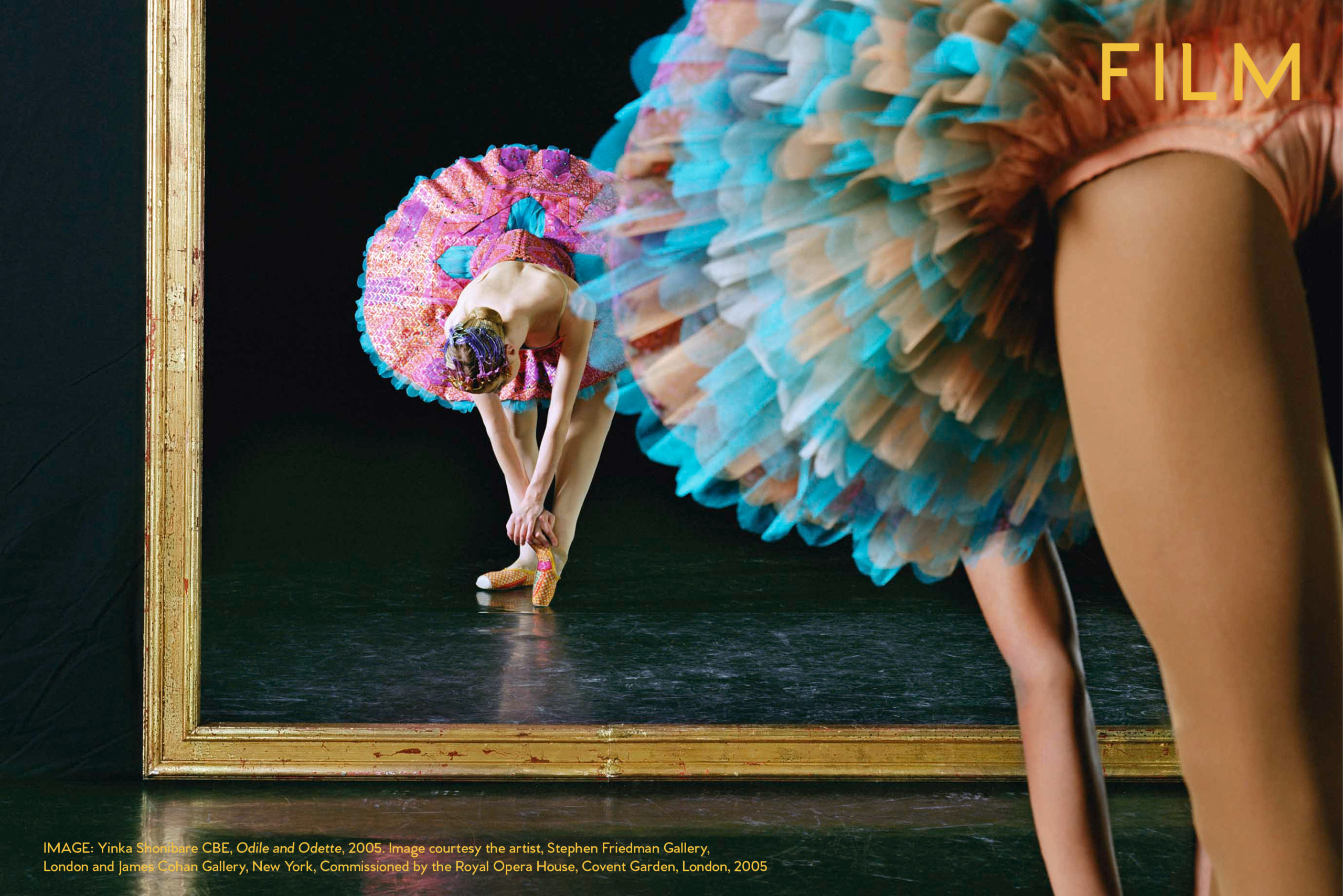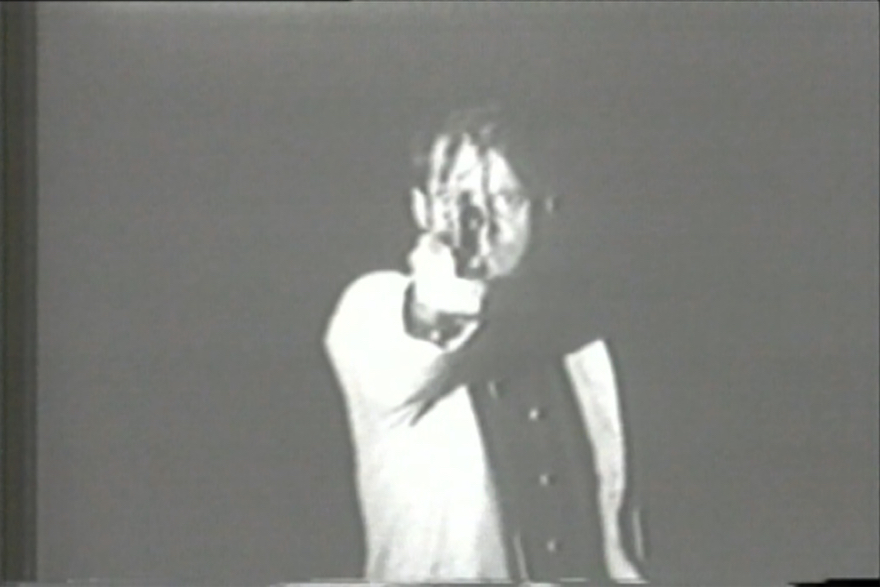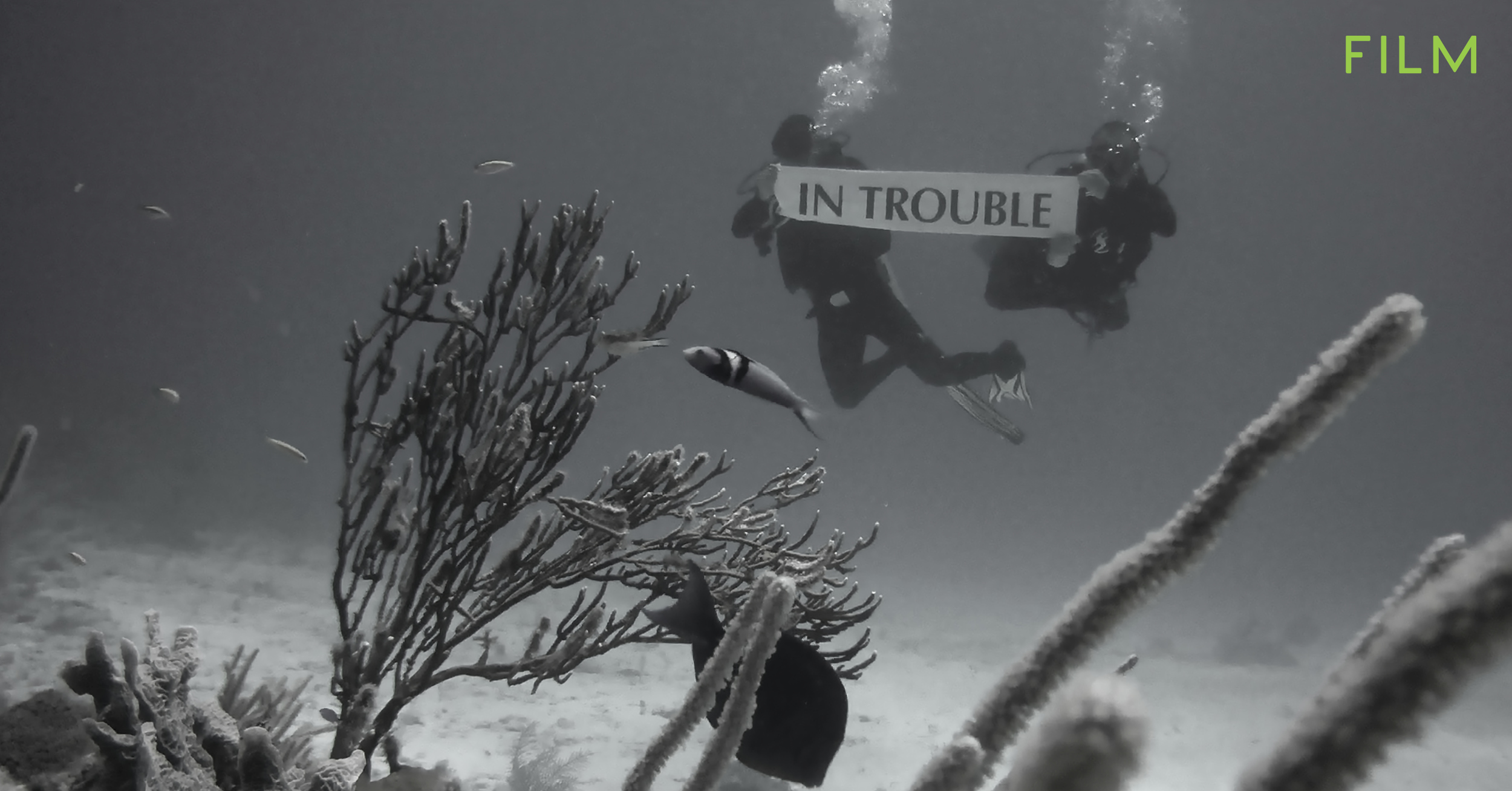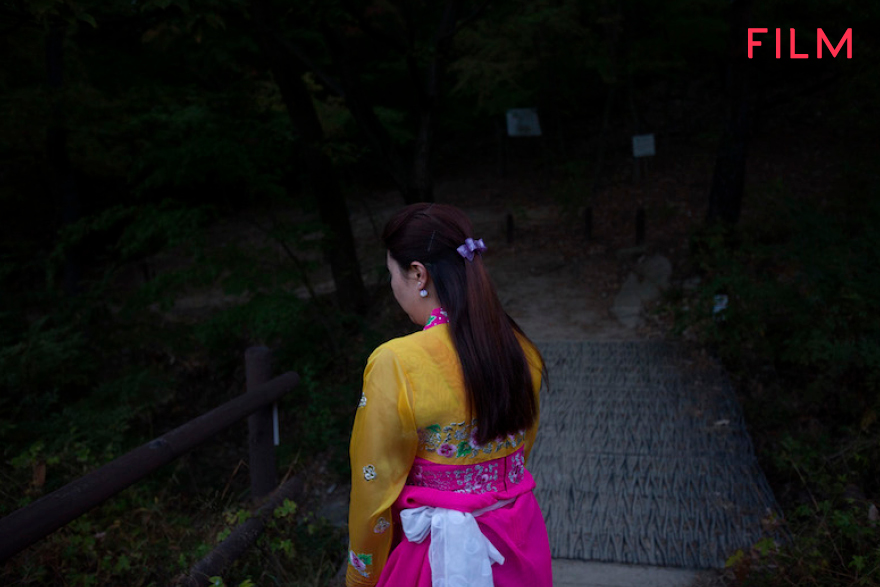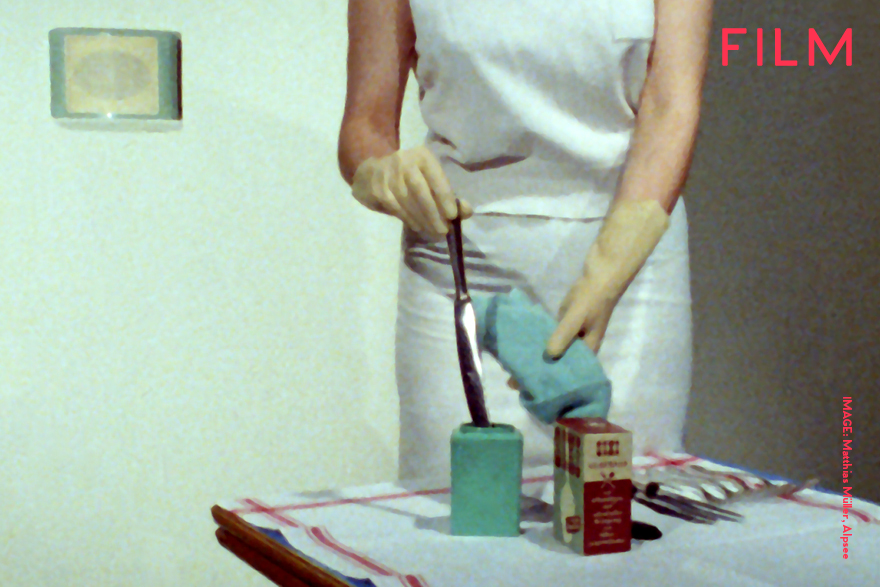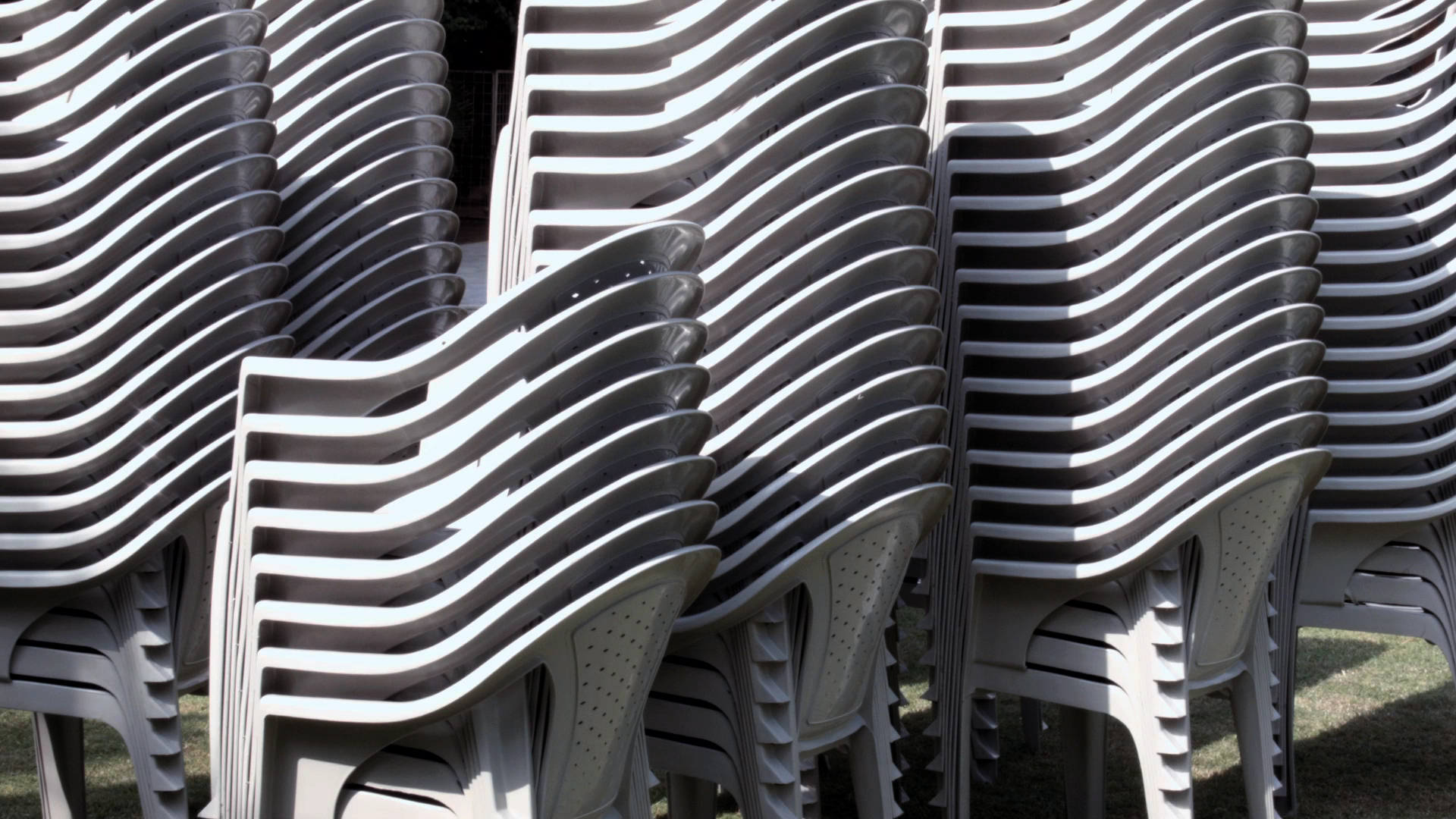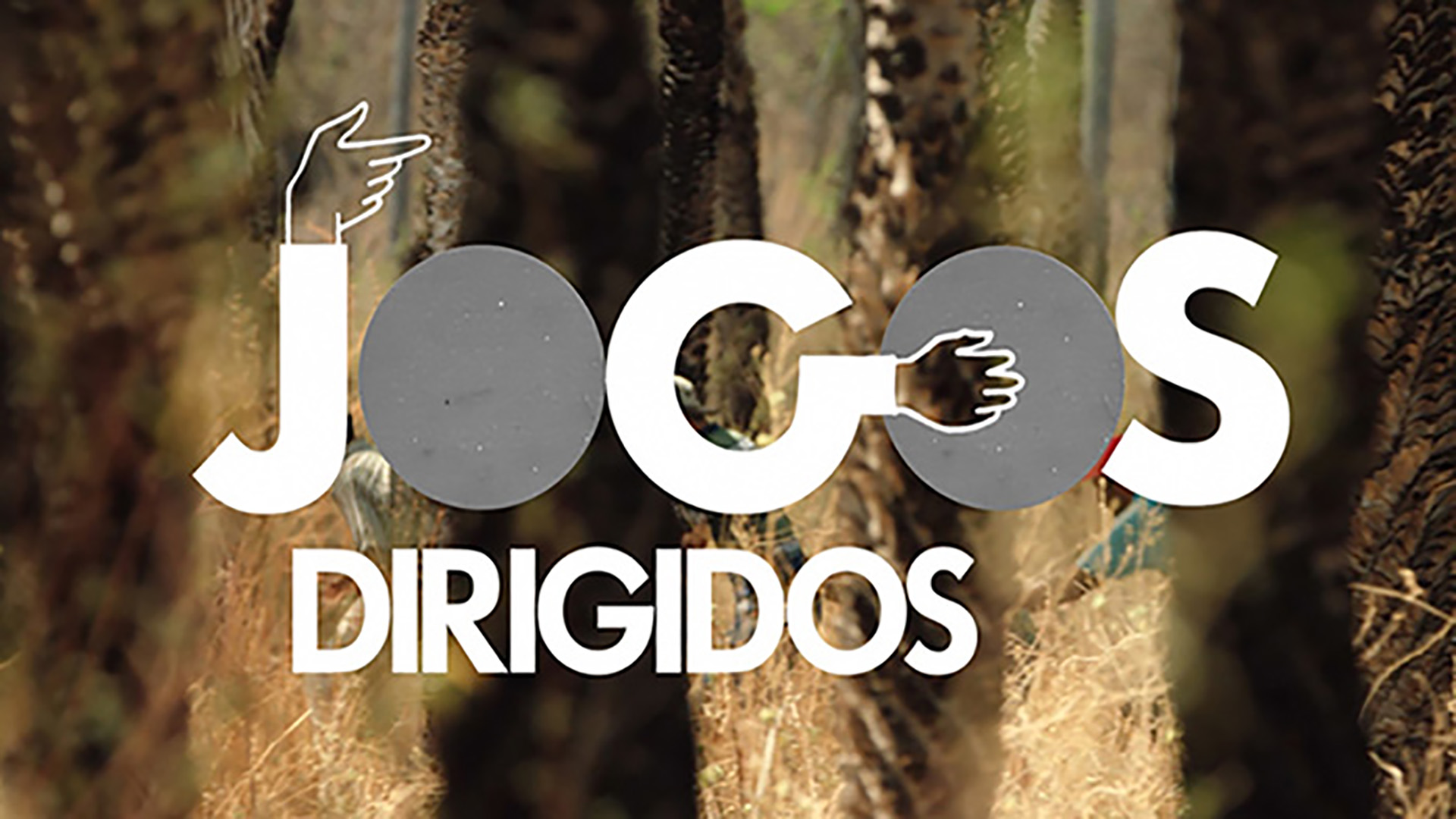SOUTH SOUTH FILM
Ho Tzu Nyen
29 – 31 July, 2022
Films will screen from Friday 29 July, 8am GMT until end of day 31 July.
“Theatricality, at the most basic, fundamental level, is the awareness of being seen, or encountered. As such, we might say that all works of art are inherently theatrical, since they exist to be engaged with, even if the audience is no one else but the maker himself or herself. It is also conceivable that one’s audience is non-human, for example in the case of rituals performed for the spirits and the gods, or perhaps aliens, such as the sounds projected into outer space by my Indonesian artist friend Venzha Christ.
I suppose one can think of national histories as innately theatrical, since they are designed as stories to be addressed to another, whom they interpolate into the narrative. All national histories insist on the inevitability of the State. Perhaps the work of art is defined by a process of continuous othering, while national histories function through the elimination of otherness…”
– Ho Tzu Nyen
Artist courtesy of collector Jim Amberson and Kiang Malingue
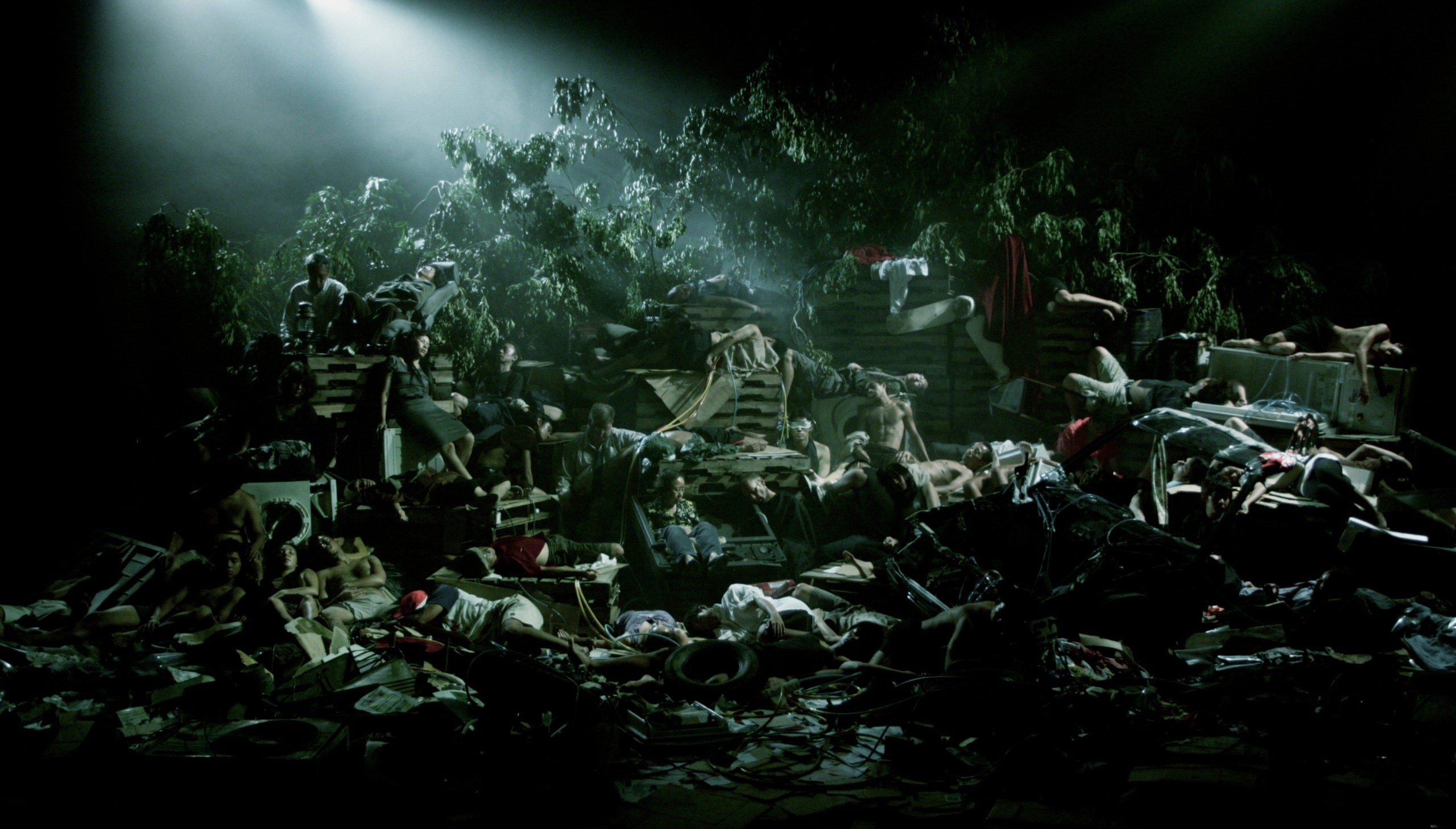
Opening 29 July 2022
EARTH [cinema]
2009
42′
Single channel HD video, stereo sound
Soundtrack by Yasuhiro Morinaga (with Stefano Pilia)
We see the site of an unknown disaster, where fifty 50 humans oscillate between consciousness and unconsciousness, life and death, as the light constantly alternates between warm to cool, day to night. EARTH is a post-apocalyptic collage of paintings by classical European painters such as Caravaggio, Girodet and Géricault. This video reassembles the paintings in an analogous way to how the human body has been reconfigured in some of these paintings.
EARTH exists with multiple soundtracks, created by different experimental musicians and sound artists from different places in the world. Collaborators include The Observatory (Singapore), Yasuhiro Morinaga and Stefano Pillia (Japan, Italy), Black to Comm (Germany), Wolfram (Poland), Oren Ambarchi (Australia), Aki Onda (Japan), Nils Frahm (Germany), Mugstar (UK), FOUDRE! (France).
This version of the film features the soundtrack by Yasuhiro Morinaga (samples) with Stefano Pilia (guitars). Morinaga’s samples are extracted from the soundtracks of films from different cinematic traditions across different historical moments, with their differences in aesthetic approaches and recording techniques. Freed from the body of their original hosts, these fragments of soundtrack populate the crumbling world of EARTH like ghosts.
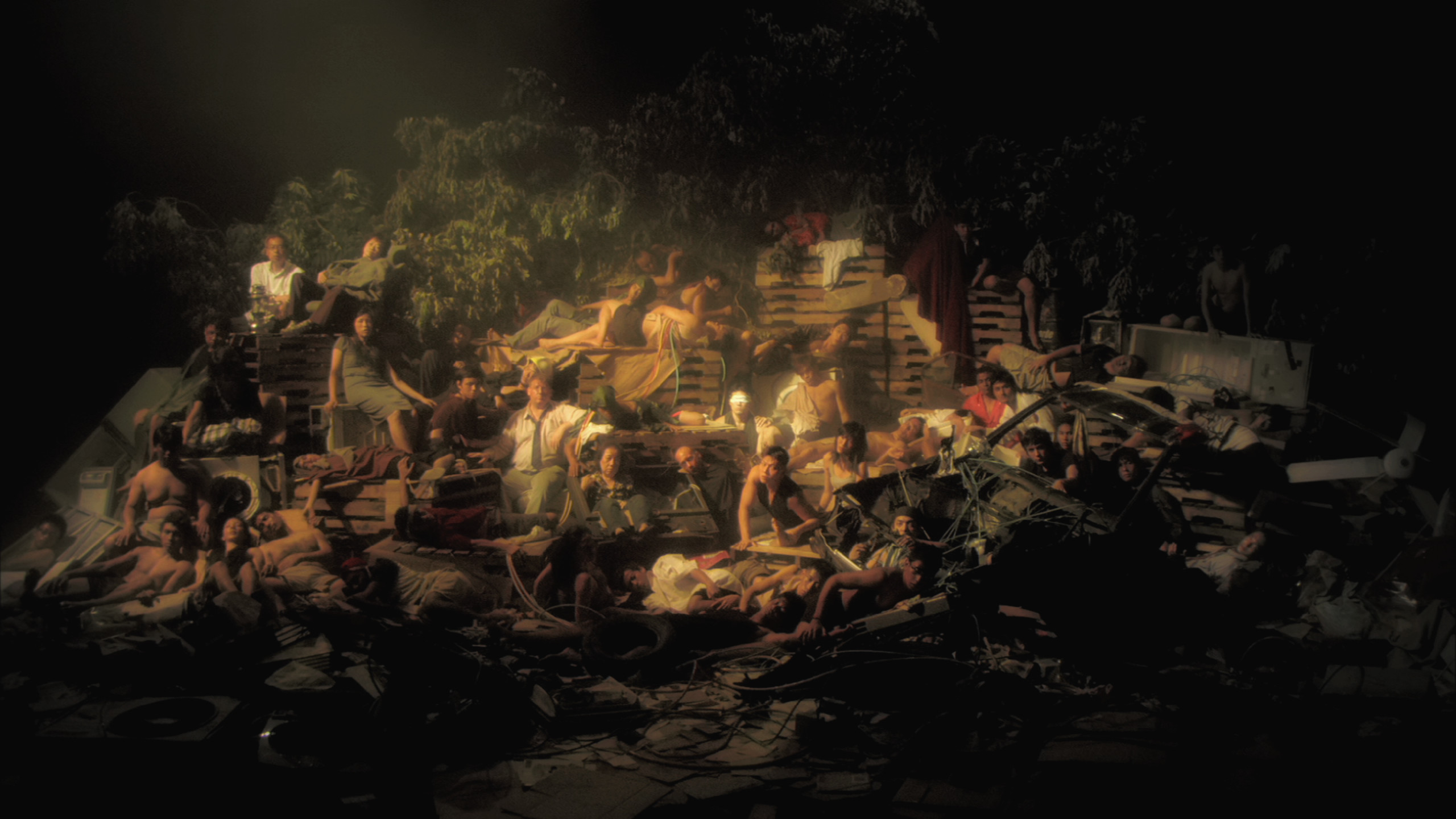
Opening 29 July 2022
EARTH [radio]
2009
42′
Single channel HD video, stereo sound
Soundtrack by Ho Tzu Nyen
We see the site of an unknown disaster, where fifty 50 humans oscillate between consciousness and unconsciousness, life and death, as the light constantly alternates between warm to cool, day to night. EARTH is a post-apocalyptic collage of paintings by classical European painters such as Caravaggio, Girodet and Géricault. This video reassembles the paintings in an analogous way to how the human body has been reconfigured in some of these paintings.
EARTH exists with multiple soundtracks, created by different experimental musicians and sound artists from different places in the world. Collaborators include The Observatory (Singapore), Yasuhiro Morinaga and Stefano Pillia (Japan, Italy), Black to Comm (Germany), Wolfram (Poland), Oren Ambarchi (Australia), Aki Onda (Japan), Nils Frahm (Germany), Mugstar (UK), FOUDRE! (France).
This version of the film features the soundtrack by Ho Tzu Nyen. While the imagery and iconography of EARTH is derived from a largely European canon of French and Italian painting, this soundtrack is inspired by another very specific set of rock-music staples from the 1970s and 1980s that members of Ho’s generation grew up listening to. Riffs and extracts from Billboard Top 100 hits by Guns N’ Roses, Queen, Metallica and Def Leppard swirl distortedly through the soundtrack. In one scene, a disembodied hand clutches a decapitated head and bobs it slowly up and down, making it nod to the sound of Michael Jackson’s “Beat It,” slowed down almost to a grinding halt. The effect is both pathetic and ghoulish: in addition to echoing Caravaggio’s David and Goliath (c. 1599), this scene evokes the universally felt agony of a protracted death, as well as the incredible resurrections of creatures seen in cult zombie movies of the 1970s.
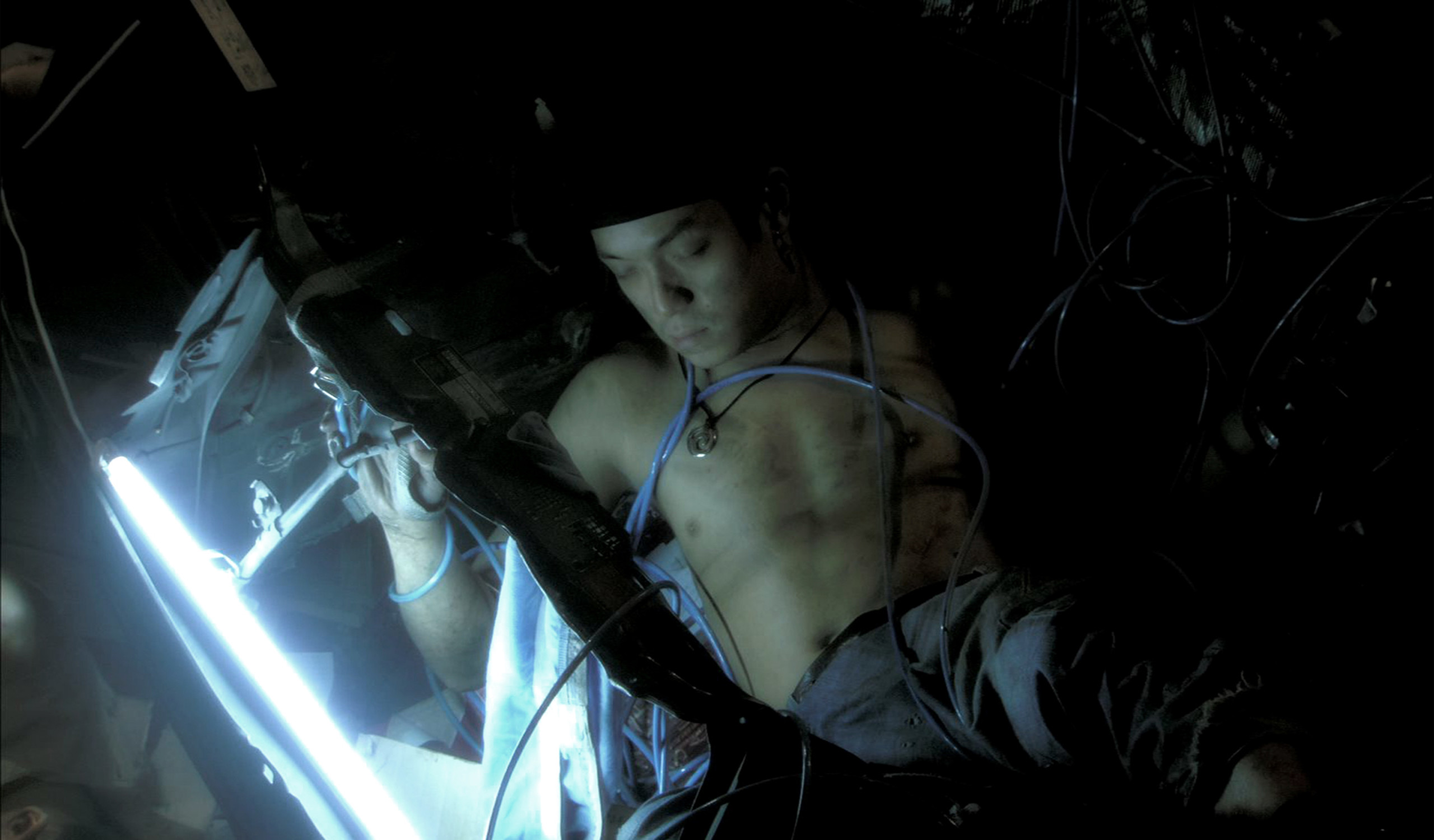
Opening 29 July 2022
EARTH [Black to Comm]
2011
42′
Single channel HD video, 5.1 surround sound
Soundtrack by Black to Comm
We see the site of an unknown disaster, where fifty 50 humans oscillate between consciousness and unconsciousness, life and death, as the light constantly alternates between warm to cool, day to night. EARTH is a post-apocalyptic collage of paintings by classical European painters such as Caravaggio, Girodet and Géricault. This video reassembles the paintings in an analogous way to how the human body has been reconfigured in some of these paintings.
EARTH exists with multiple soundtracks, created by different experimental musicians and sound artists from different places in the world. Collaborators include The Observatory (Singapore), Yasuhiro Morinaga and Stefano Pillia (Japan, Italy), Black to Comm (Germany), Wolfram (Poland), Oren Ambarchi (Australia), Aki Onda (Japan), Nils Frahm (Germany), Mugstar (UK), FOUDRE! (France).
This version features the soundtrack by Black to Comm (a.k.a. Marc Richter), featuring vocals by Vindicatrix (David Aird). This is the most “standard” soundtrack accompanying the video, and has been performed most in a variety of different contexts. About this soundtrack, Richter says: “Most of the music was composed under the influence of heavy pain killers while recovering from a broken leg. The music (like the film) is about slowness and decay, states of unconsciousness, sleeping and waking up, dying and being reborn. The film basically is a post-apocalyptic collage based on paintings by classical European painters (Caravaggio, Delacroix, Rembrandt, Géricault) – the music tries to translate that concept employing similar collage-based sampling techniques using loops made from vintage vinyl and shellac records combined with acoustic and electronic instrumentation and voice.”
4 x 4 – Episodes of Singapore Art
This series is an attempt to present 4 important artworks by 4 Singaporean artists in a manner that is visually innovative and thought provoking. It seeks to do away with the usual clichés of the art documentary, by dramatizing the process of interpreting, understanding and debating modern art. In each of the episodes, a single artwork will serve as the focal point through which a host of issues such as modernity, urbanization and the value of modern art can be introduced and discussed. 4 x 4 – Episodes of Singapore Art is in itself a work of art by artist-filmmaker Ho Tzu Nyen and conceived specifically to tie in with the Singapore Art Show 2005. This series thus marks a historical precedent in Singapore for a collaborative effort between the worlds of visual art and television production, as well as being the first time that Arts Central is used as a platform to present a piece of visual art.
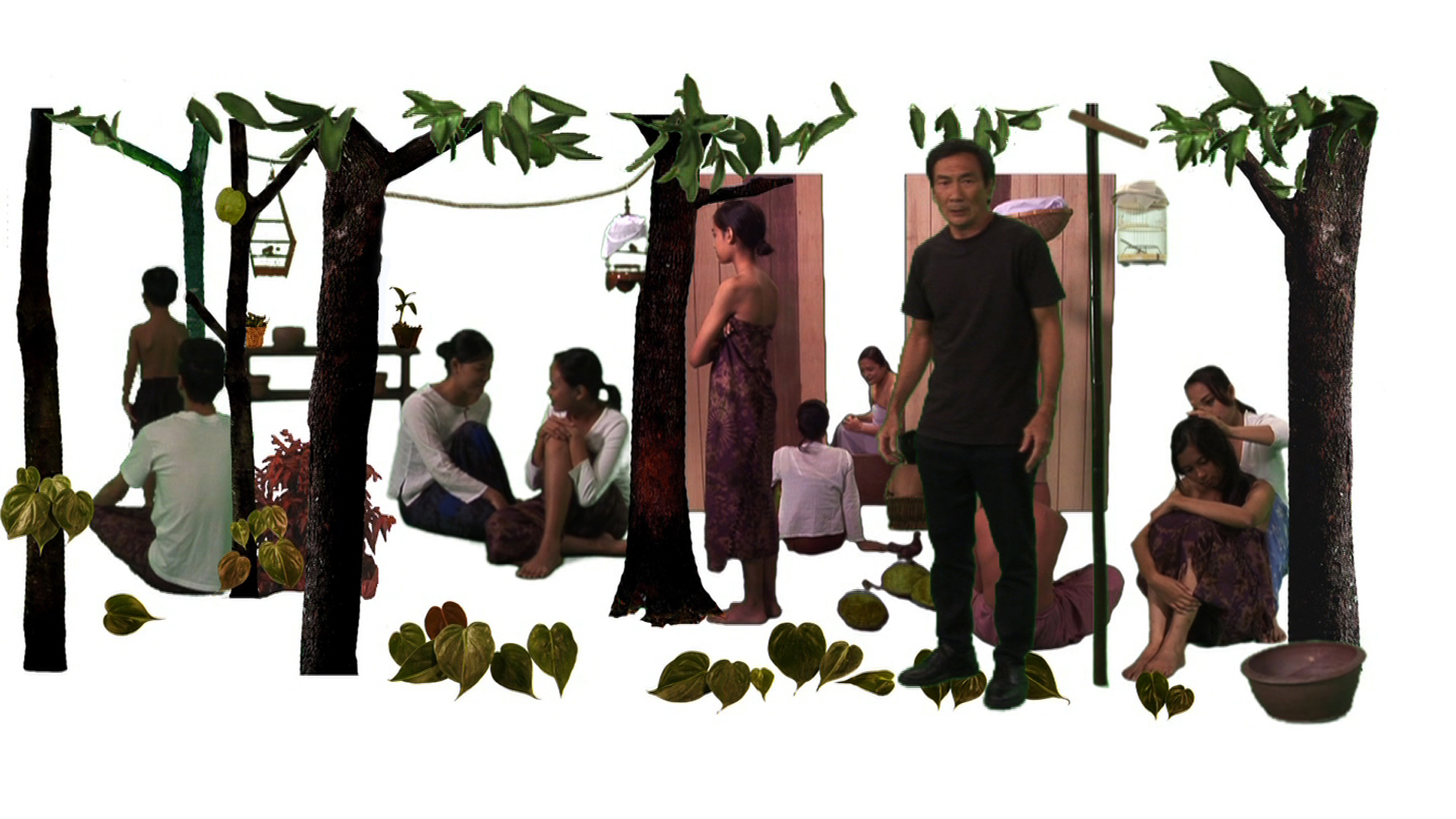
Opening 29 July 2022
Episode One: Cheong Soo Pieng – A Dream of Tropical Life
Features Tropical Life, 1959, one of the most popular paintings by Cheong Soo Pieng, who is considered to be one of Singapore’s 4 ‘pioneer artists’. This episode is framed by the scenario of a tiff between a pair of lovers – an older man (played by Lim Kay Tong) and a younger woman (played by Janice Koh). Through this clash between the two protagonists, in order to bring out the intricacies of the painting, touching upon issues of modernization, urbanization and the loss of the kampung lifestyle.
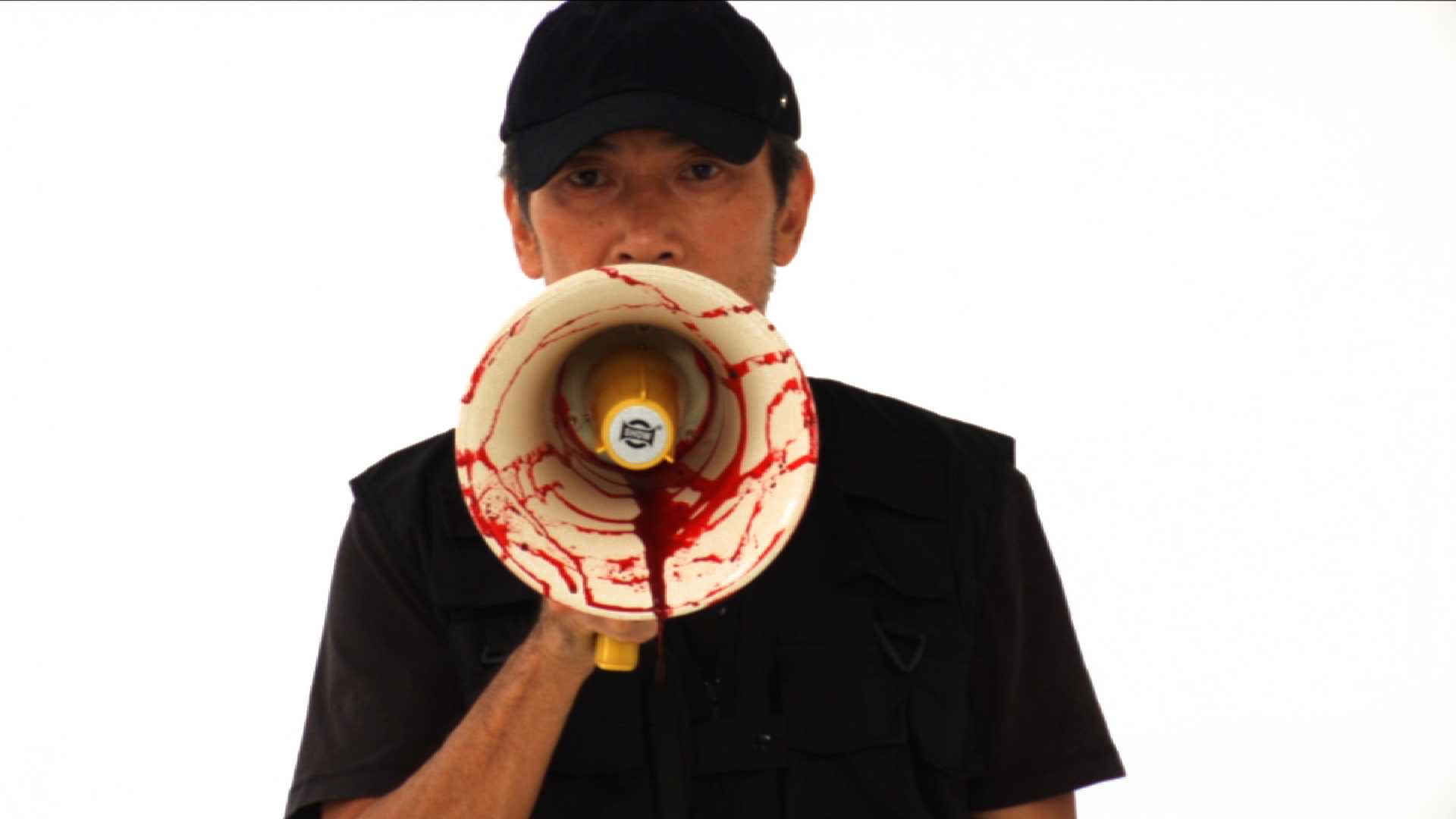
Opening 29 July 2022
Episode Two: Cheo Chai Hiang – A Thousand Singapore Rivers
Features 5ft x 5ft (Singapore River), 1972, quite possibly the first piece of ‘conceptual art’ to appear in Singapore. This episode is framed by the scenario of an argument about the value and validity of conceptual art taking place between a gallery guide (played by Lim Kay Tong) and a gallery visitor (played by Amy Cheng). The argument turns ugly, and eventually, violent. Through Cheo Chai Hiang’s work, we revisit many versions of the river done by some of Singapore’s top painters, while briefly examining the historical changes undergone by this landmark.
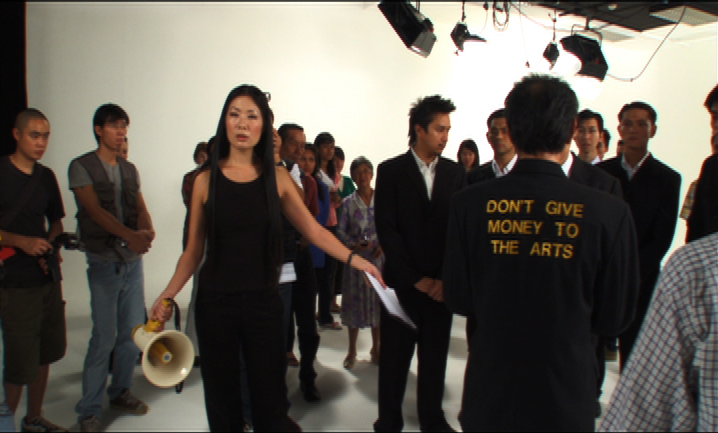
Opening 29 July 2022
Episode Three: Tang Da Wu – The Most Radical Gesture
Features Don’t Give Money to the Arts, 1995 by Tang Da Wu, one of Singapore’s most important living artists and a pioneer of the practice of performance art. In 1995, Tang Da Wu approached the then President of Singapore at a gala opening of an important art event, wearing a jacket with the words ‘Don’t Give Money to the Arts’ sewn on its back. This episode uses the scenario of differences between the director (played by Lim Kay Tong) and his assistant (played by Emma Yong) about how a film shoot of Tang’s performance is to proceed, as a device to examine the nature of performance art.
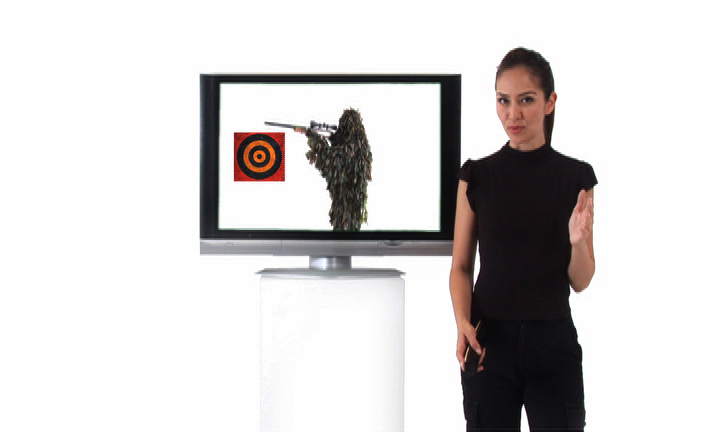
Opening 29 July 2022
Episode Four: Lim Tzay Chuen – The Invisible Artwork
Features Don’t Give Money to the Arts, 2002, an unrealized proposal for an artwork by Lim Tzay Chuen, who recently represented Singapore at the prestigious Venice Biennale. Lim had proposed for a bullet into an art gallery at the National Institute of Education from a nearby range. This episode uses the scenario of disagreements between a television host of an arts documentary and a television viewer (both roles played alternatively by Lim Kay Tong and Beatrice Chia) in order to examine a host of ethical issues connected to Lim Tzay Chuen’s proposed project.
ABOUT THE ARTIST
Ho Tzu Nyen was born in Singapore in 1976. He earned a BA in Creative Arts from Victorian College of the Arts, University of Melbourne (2001), and an MA in Southeast Asian Studies from the National University of Singapore (2007). He works primarily in film, video, and performance, and has recently developed environmental multimedia installations. He has also written extensively on art. Ho appropriates the structures of epic myths, invoking their grandeur while revealing them to be not merely stories, but discursive tools. He is particularly concerned with those moments when contemporary figures imagine and invent the past in order to serve the needs of the present. These conditions are especially salient in the context of Singapore, which was established as an independent nation in 1965. A series of occupations and settlements by regional groups constitutes the history of the strategic port archipelago prior to 19th century British colonization. A desire to redress the country’s unaccounted-for history indicates the rise in nationalism that has emerged in parallel with accelerated economic development.
Ho’s work Utama—Every Name in History is I (2003), which consists of a video and twenty portrait paintings, images the quixotic pursuit of the distant past. Depicting the 14th-century figure of Sang Nila Utama, a discoverer of the island nation, the video weaves together apocryphal relationships with other historical regional leaders to boost the legitimacy of the founding narrative and collapses time by employing the same person to play other explorers including Christopher Columbus, Vasco da Gama, Zheng He, and Singapore’s British colonizer Sir Thomas Stamford Raffles. The work simultaneously assembles and dispels myth. Ho is also invested in establishing a tradition of Singaporean contemporary art; in 2005, he produced 4×4—Episodes of Singapore Art, a series of four documentaries on native artists that was aired on Singapore Television.
In 2006, Ho completed Sejarah Singapura, a commission for the National Museum of Singapore that features an immersive, panoramic audiovisual representation of precolonial Singapore. His first feature film, HERE (2009) is an allegory of historical reckoning. Shot in the style of a documentary and set in a mental institution, the film features a protagonist undergoing an experimental “videocure” treatment, a plot inspired by the writings of French theorist Félix Guattari. Ho’s character reenacts a traumatic personal event before the camera, altering its course to generate a positive outcome. He then watches himself on film to complete the therapy—empowered by the fictitious revision, he must confront the consequences of unreconstructed reality.
Ho has had solo exhibitions at Substation Gallery, Singapore (2003); Contemporary Art Centre of South Australia, Adelaide (2010); Artspace, Sydney (2011); and Mori Art Museum, Tokyo (2012). He also represented Singapore at the 54th Venice Biennale (2011). He has participated in numerous international film festivals including the 41st Directors’ Fortnight at the Cannes International Film Festival in France (2009) and Sundance Film Festival in Park City, Utah (2012). Important group exhibitions include Singapore Biennial (2006); Video Killed the Painting Star, Contemporary Center of Art, Glasgow (2007); Thermocline of Art: New Asian Waves, ZKM Center for Art and Media, Karlsruhe (2007); Asia Pacific Triennial, Queensland Art Gallery, Brisbane (2009); No Soul for Sale, Tate Modern, London (2010); transmediale.11, Haus der Kulturen der Welt, Berlin (2011); Surplus Authors, Witte de With, Rotterdam (2012); and Autonomous Zones, Times Museum, Guangzhou, China (2013). Ho lives and works in Singapore.

